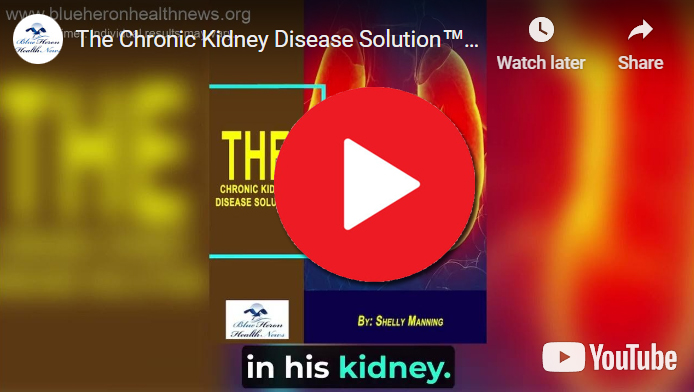
The Chronic Kidney Disease Solution™ by Shelly Manning It is an eBook that includes the most popular methods to care and manage kidney diseases by following the information provided in it. This easily readable eBook covers up various important topics like what is chronic kidney disease, how it is caused, how it can be diagnosed, tissue damages caused by chronic inflammation, how your condition is affected by gut biome, choices for powerful lifestyle and chronic kidney disease with natural tools etc.
How can one manage chronic kidney disease with low blood pressure?
Managing chronic kidney disease (CKD) with low blood pressure (hypotension) can be challenging because maintaining adequate blood flow to the kidneys is essential to prevent further damage. Here are strategies to manage CKD when dealing with low blood pressure:
1. Medication Management
- Review of Antihypertensive Medications: If you are taking medications to manage high blood pressure, such as ACE inhibitors, ARBs, or diuretics, these may need to be adjusted or reduced if blood pressure becomes too low. Always consult your healthcare provider before making any changes to medication (Labiotech.eu) (Med Xpress).
- Medication Timing: Sometimes, adjusting the timing of medications can help stabilize blood pressure. For example, taking medications in the morning rather than at night may help prevent nighttime hypotension (FIU News).
2. Dietary Adjustments
- Adequate Salt Intake: While many CKD patients need to limit salt, in the case of low blood pressure, a moderate increase in salt intake may be necessary to help maintain blood pressure. This should only be done under the guidance of a healthcare provider (Labiotech.eu).
- Balanced Fluid Intake: Managing fluid intake is crucial in CKD. If you have low blood pressure, you may need to ensure you are drinking enough fluids to maintain blood volume, but this must be balanced to avoid fluid overload. A dietitian can help create a tailored plan (Med Xpress).
3. Lifestyle Changes
- Slow Position Changes: Standing up slowly from a sitting or lying position can help prevent dizziness and fainting, which are common symptoms of low blood pressure. Orthostatic hypotension (a drop in blood pressure when standing up) can be managed by taking these precautions (FIU News).
- Small, Frequent Meals: Eating smaller, more frequent meals can help prevent postprandial hypotension (a drop in blood pressure after eating). Large meals can divert blood flow to the digestive system, leading to lower blood pressure elsewhere in the body (Labiotech.eu).
4. Monitoring and Adjustments
- Regular Blood Pressure Monitoring: Regularly checking your blood pressure at home can help track trends and identify when it is too low. Share this information with your healthcare provider to adjust your treatment plan as needed (Med Xpress).
- Monitoring for Symptoms: Pay attention to symptoms of low blood pressure, such as dizziness, fainting, blurred vision, and fatigue. Report these symptoms to your healthcare provider, as they may indicate a need to adjust your treatment (FIU News).
5. Addressing Underlying Causes
- Investigate Causes of Low Blood Pressure: Low blood pressure in CKD patients can be caused by various factors, including dehydration, medication side effects, or autonomic dysfunction. Identifying and addressing the underlying cause is essential for effective management (Labiotech.eu).
- Treatment of Anemia: Anemia is common in CKD and can contribute to low blood pressure. Managing anemia through medications like erythropoiesis-stimulating agents (ESAs) and iron supplements can help stabilize blood pressure (Med Xpress).
6. Regular Medical Follow-Up
- Close Monitoring by Healthcare Providers: Regular follow-up with your nephrologist and other healthcare providers is crucial. They can adjust your treatment plan, including medications and dietary recommendations, to help manage both CKD and low blood pressure effectively (FIU News).
- Integrated Care: Work closely with a multidisciplinary team, including a nephrologist, cardiologist, and dietitian, to ensure comprehensive management of your condition (Labiotech.eu).
Conclusion
Managing CKD with low blood pressure involves careful adjustment of medications, dietary modifications, and lifestyle changes. Regular monitoring and close communication with healthcare providers are essential to prevent complications and ensure optimal management of both CKD and hypotension.
The Chronic Kidney Disease Solution™ by Shelly Manning It is an eBook that includes the most popular methods to care and manage kidney diseases by following the information provided in it. This easily readable eBook covers up various important topics like what is chronic kidney disease, how it is caused, how it can be diagnosed, tissue damages caused by chronic inflammation, how your condition is affected by gut biome, choices for powerful lifestyle and chronic kidney disease with natural tools etc.
